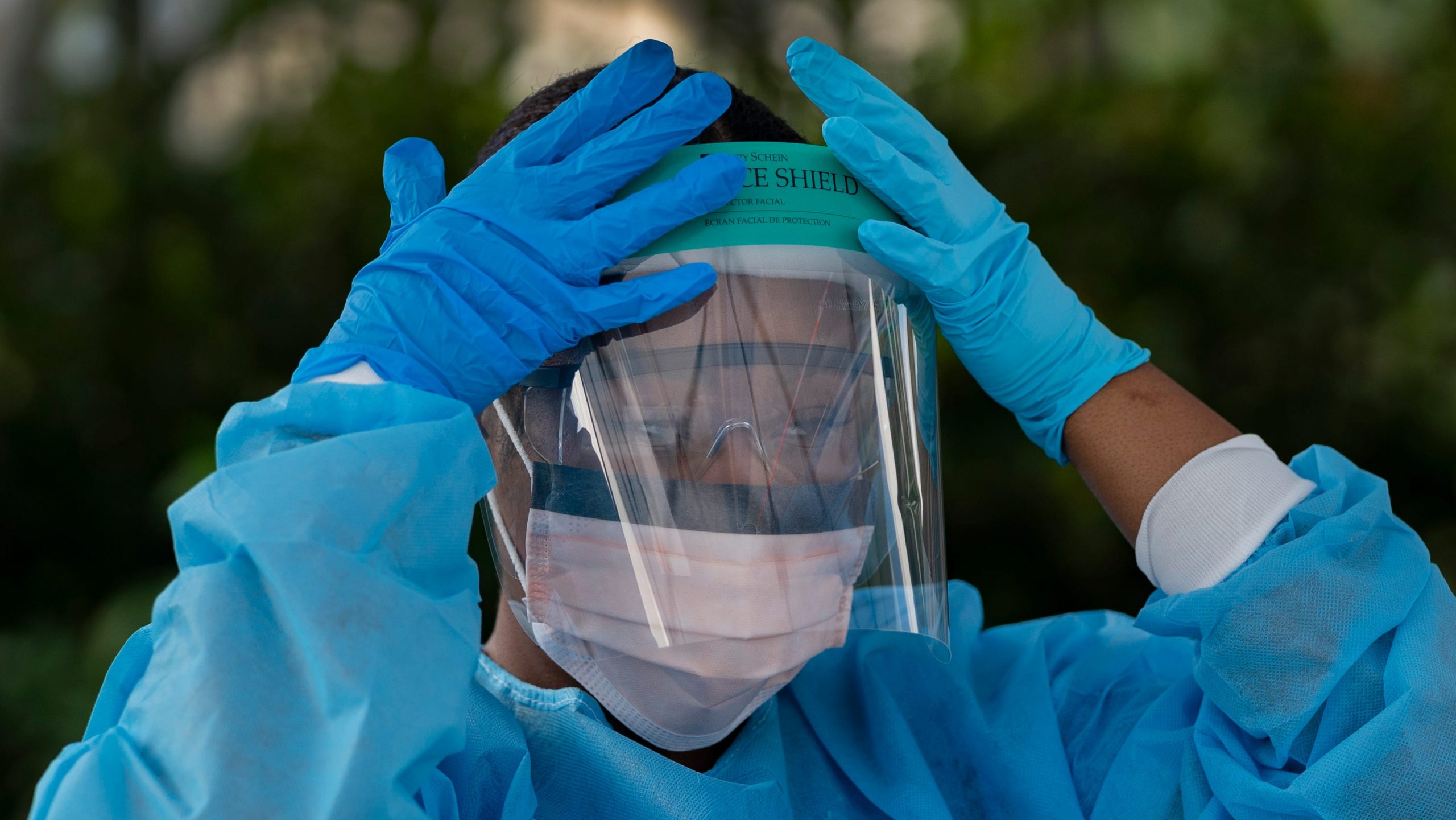CLOSE![]()
Got a minute? Here’s how you can help slow the spread of Coronavirus COVID-19 in under 60 seconds.
USA TODAY
Even before the first horrific phase of the COVID-19 pandemic has run its course, scientists are worried about the second wave of the disease.
It could crash worse than the first, killing tens of thousands of people who did such a good job of sheltering in place they remain virgin ground for the virus. Or it could be a mere swell, with so many people having been infected without symptoms that levels of immunity are higher than realized.
There is no crystal ball to look to, because so many crucial pieces of information remain missing.
Are people who’ve had COVID-19 immune? How long does immunity last? Will the virus play out like influenza and the common cold, peaking during cooler months and falling during warmer ones? Is its deadly path undeterred whatever the weather?
Coronavirus Watch: Sign up for daily updates to your inbox
Until there’s a vaccine “it’s unfortunately not unlikely that we may see a second wave or even a third wave,” said Peter Marks, director of the U.S. Food and Drug Administration’s Center for Biologics Evaluation and Research, which oversees vaccines.
“I shudder to think of that, but I think we have to be realistic.”
Immunity: Can you get the coronavirus more than once?
The first question on every doctor’s mind is whether someone who has had COVID-19 is immune, and if so for how long. People who’ve had mumps are immune from it for life. Versions of the common cold caused by different types of coronavirus see immunity wane within a year. Variations are wide.
COVID-19 is such a new disease that there is no solid data on the immunity of survivors. But given its similarities to coronaviruses such as severe acute respiratory syndrome (SARS) and Middle East respiratory syndrome (MERS), it’s expected to convey at least some immunity.
That’s good news because so many people have contracted COVID-19 from SARS-CoV-2, the virus that causes the disease. Many more probably have had it asymptomatically and didn’t know. Both groups likely have some immunity.
A class war? A global power shift? How experts see the future after coronavirus.
What percentage of the population is immune is impossible to know because the United States doesn’t yet have widespread testing, experts say. An answer is likely months away. Even if immunity isn’t lifelong, the virus may have infected enough people to make it hard for it to find new victims.
“It would mean we’d be getting to herd immunity through natural immunity” even before a vaccine is developed, said Marc Lipsitch, a professor of epidemiology at Harvard’s Chan School of Public Health, who co-wrote a paper in the journal Science modeling what COVID-19 might look like after the initial pandemic has passed.
When it comes back, it’s likely to hit hardest areas not severely infected the first time, said Gregory Poland, a professor of medicine at the Mayo Clinic in Rochester, Minnesota, and editor-in-chief of the journal Vaccine.
“This outbreak has predominantly been on the two coasts. Wave 2 will be in the interior of the county where there are a lot of susceptible people,” he said.
America has suffered great loss before.Here’s how we may learn to cope with coronavirus death toll.
Will the coronavirus go away in the summer?
Another factor is whether the virus survives longer in cooler, drier weather. That’s why the flu is more common in winter, its virus survives longer and people are more likely to be indoors in close contact.
“We have no idea really whether this is going to bounce back the moment people start going back outdoors or if the warmer weather is actually going to help us out,” said Michael Mina, a professor of epidemiology at the Center for Communicable Disease Dynamics at Harvard’s Chan School of Public Health.
“If it doesn’t happen in the summer, we’d all be very surprised if we don’t see some reemergence in the fall,” he said.
Fact check: Sunlight does not kill the new coronavirus
In that case, COVID-19’s sweet spot could be the same as influenza, roughly October to May, with a peak between October and November, modeling suggests. If it does behave like influenza, it will move to the Southern hemisphere for winter there, then return to the Northern hemisphere for its cold months.
“To anthropomorphize, the virus will come back here looking for new victims,” Poland said.
The first wave of the disease, which the world is experiencing now, hit so hard because no one had immunity. It could eventually fall into a pattern of yearly reoccurrence, like influenza.
If compounded with the annual wave of winter flu, the nation’s hospitals would be further taxed.
A fall spike also seems likely as children go back to school, said Mike Reid, a professor of infectious disease at the University of California-San Francisco.
To prevent that, wide-scale testing will need to be available, and contact tracing must be in place to find everyone who has been exposed and get them to self-isolate for at least 14 days.
“Given the potential for repeated waves, the more that can be put in place to rapidly jump on every new spike and ring-fence every infected individual with wraparound health services is going to be crucial,” Reid said.
When will life return to normal? Expert says US testing is too far behind to know
What we do matters
Experts say how we behave will play a large part in the size and severity of subsequent waves. People can help by remaining vigilant about washing their hands, continuing to socially distance and wear masks in public.
Add to that more surveillance and widely available tests, chances improve the second wave is smaller than the first.
As states begin to ease restrictions, the United States will effectively become a massive series of experiments. Epidemiologists will be watching carefully, Lipsitch said.
Some areas will reopen schools, while other will have staggered school days, so not all students are there at the same time. The same will happen in workplaces, even as more work from home. Some areas will “cocoon” the elderly, taking special care they are not exposed. Others may create “passports” for people who are immune, if there’s data showing infection confers immunity.
“There are many things we can do, and we don’t know how any of them will work yet,” Lipsitch said.
Doing temperature testing in schools and businesses, as is now done in Asia, could be helpful.
“It’s not the most sensitive test in the world, but it is a screen that keeps people conscious that they have an obligation not to infect other people,” said Barry Bloom, a professor of public health at Harvard’s Chan School of Public Health.
Staying Apart, Together: This newsletter will help you cope with the coronavirus pandemic
The price of health is eternal vigilance
Vigilance will be key, experts say.
“No one can say when the coast is clear,” said William Hanage, a professor of epidemiology at Harvard’s Chan School of Public Health.
COVID-19 is easy enough to spread and has a long enough incubation period it’s possible to go from 100 known cases one week to 65,000 a few weeks later. “One slip and we could see it resurging,” he said.
There’s a cautionary tale from the 2003 outbreak of SARS in Toronto, which infected 375 people there and killed 44. The city took expanded precautions beginning in March, but they were lifted in May when it appeared the outbreak was over. It wasn’t.
“Toronto took the brakes off,” Hanage said. “They had a flare, and it took them weeks to get it back under control.”
Contact reporter Elizabeth Weise at eweise@usatoday.com
CLOSE![]()
The former leader of the Global Rapid Response Team at the Centers for Disease Control and Prevention on Friday explained what we know about the COVID-19 pandemic. (April 10)
AP Domestic
Read or Share this story: https://www.usatoday.com/story/news/health/2020/04/19/coronavirus-herd-immunity-vaccines-determine-covid-second-wave/5151957002/






… [Trackback]
[…] Find More Information here on that Topic: famousreporters.com/when-will-a-second-wave-of-the-coronavirus-hit-and-what-will-it-look-like/ […]
… [Trackback]
[…] Read More on that Topic: famousreporters.com/when-will-a-second-wave-of-the-coronavirus-hit-and-what-will-it-look-like/ […]
… [Trackback]
[…] Read More here to that Topic: famousreporters.com/when-will-a-second-wave-of-the-coronavirus-hit-and-what-will-it-look-like/ […]
… [Trackback]
[…] Find More on to that Topic: famousreporters.com/when-will-a-second-wave-of-the-coronavirus-hit-and-what-will-it-look-like/ […]
… [Trackback]
[…] Find More on that Topic: famousreporters.com/when-will-a-second-wave-of-the-coronavirus-hit-and-what-will-it-look-like/ […]
… [Trackback]
[…] Info on that Topic: famousreporters.com/when-will-a-second-wave-of-the-coronavirus-hit-and-what-will-it-look-like/ […]
… [Trackback]
[…] Read More to that Topic: famousreporters.com/when-will-a-second-wave-of-the-coronavirus-hit-and-what-will-it-look-like/ […]
… [Trackback]
[…] Here you will find 91542 additional Information to that Topic: famousreporters.com/when-will-a-second-wave-of-the-coronavirus-hit-and-what-will-it-look-like/ […]
… [Trackback]
[…] Information to that Topic: famousreporters.com/when-will-a-second-wave-of-the-coronavirus-hit-and-what-will-it-look-like/ […]
… [Trackback]
[…] Here you can find 69311 more Information on that Topic: famousreporters.com/when-will-a-second-wave-of-the-coronavirus-hit-and-what-will-it-look-like/ […]
… [Trackback]
[…] Here you will find 28589 additional Information on that Topic: famousreporters.com/when-will-a-second-wave-of-the-coronavirus-hit-and-what-will-it-look-like/ […]
… [Trackback]
[…] Find More on that Topic: famousreporters.com/when-will-a-second-wave-of-the-coronavirus-hit-and-what-will-it-look-like/ […]
… [Trackback]
[…] Find More Information here to that Topic: famousreporters.com/when-will-a-second-wave-of-the-coronavirus-hit-and-what-will-it-look-like/ […]
… [Trackback]
[…] Here you can find 84027 more Information to that Topic: famousreporters.com/when-will-a-second-wave-of-the-coronavirus-hit-and-what-will-it-look-like/ […]
… [Trackback]
[…] There you can find 59874 more Information to that Topic: famousreporters.com/when-will-a-second-wave-of-the-coronavirus-hit-and-what-will-it-look-like/ […]
… [Trackback]
[…] Read More here to that Topic: famousreporters.com/when-will-a-second-wave-of-the-coronavirus-hit-and-what-will-it-look-like/ […]
… [Trackback]
[…] Read More here on that Topic: famousreporters.com/when-will-a-second-wave-of-the-coronavirus-hit-and-what-will-it-look-like/ […]
… [Trackback]
[…] Find More on that Topic: famousreporters.com/when-will-a-second-wave-of-the-coronavirus-hit-and-what-will-it-look-like/ […]
… [Trackback]
[…] Find More Info here to that Topic: famousreporters.com/when-will-a-second-wave-of-the-coronavirus-hit-and-what-will-it-look-like/ […]
… [Trackback]
[…] Find More to that Topic: famousreporters.com/when-will-a-second-wave-of-the-coronavirus-hit-and-what-will-it-look-like/ […]
… [Trackback]
[…] Find More to that Topic: famousreporters.com/when-will-a-second-wave-of-the-coronavirus-hit-and-what-will-it-look-like/ […]
… [Trackback]
[…] Find More Information here on that Topic: famousreporters.com/when-will-a-second-wave-of-the-coronavirus-hit-and-what-will-it-look-like/ […]